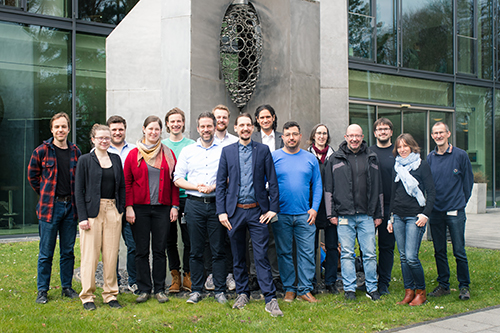Kick-off for project ADAPTEX

Kick-off meeting of ADAPTEX took place end of March at DLR in Cologne. Six partners from academia and industry, including the German Aerospace Center (DLR), the Universities of Cologne and Aachen, Jülich Supercomputing Center and Hydrotec GmbH are collaborating on this project to improve the accuracy and performance of computational fluid dynamics simulations on supercomputers. The project will focus on the mathematical basis of the discontinuous Galerkin method on dynamically adaptive grids to enable high resolution, computationally efficient modelling of Earth system models. The project addresses applications such as ocean modelling, atmospheric transport processes, and flood simulations, with EMAC as one of its pilot applications. One goal is the development of a dynamical core with an adaptive grid in MESSy.
Project leader Dr. Johannes Holke from the Institute for Software Technology is pleased with the official start of the project: “Together with these competent cooperation partners, we will investigate how fluid dynamics simulations for Earth system models can be calculated much more efficiently on modern high-performance exascale computers over the next three years. We are working here on the mathematical basis of the so-called discontinuous Galerkin method on dynamic adaptive grids, which enables a detailed, computationally efficient modelling of Earth systems. In essence, we can dynamically change the resolution of the fluid dynamics simulation in order to bundle computing capacities at regions where we want to achieve higher accuracy, while at the same time using less computing capacity in the areas of the simulation where a coarser resolution is sufficient.”
The Institute for Software Technology, together with RWTH Aachen and the University of Cologne, is responsible for the development of the common software framework by combining the existing, individually specialized HPC software libraries.
Pilot applications of the project stem from the Jülich Research Center, the DLR Institute for Atmospheric Physics, and Hydrotec GmbH. The fluid dynamics simulations are in the area of water models as well as atmospheric transport processes, such as the dispersion of volcanic ash or greenhouse gases in the atmosphere. Utilising optimized fluid dynamics codes on exascale computers, simulations of floodings for significantly larger areas should also be possible in a shorter time, which means more precise crisis management and efficient rescue operations.
The ADAPTEX project, funded by the Federal Ministry of Education and Research (BMBF), brings together existing technologies and application cases from research partners. The new software framework is intended to optimize existing fluid dynamics simulations of the project partners on exascale computers through dynamic adaptive grids and to enable significantly shorter computing times and finer resolution.
In the future, the framework should be able to be used generally for most fluid dynamics simulations and made available as open-source beyond the pilot application cases. The project participants are already looking forward to a particular highlight – in the ADPATEX project, they will perform calculations on the first exascale computer in Europe, which will start operation in Jülich in 2024.
